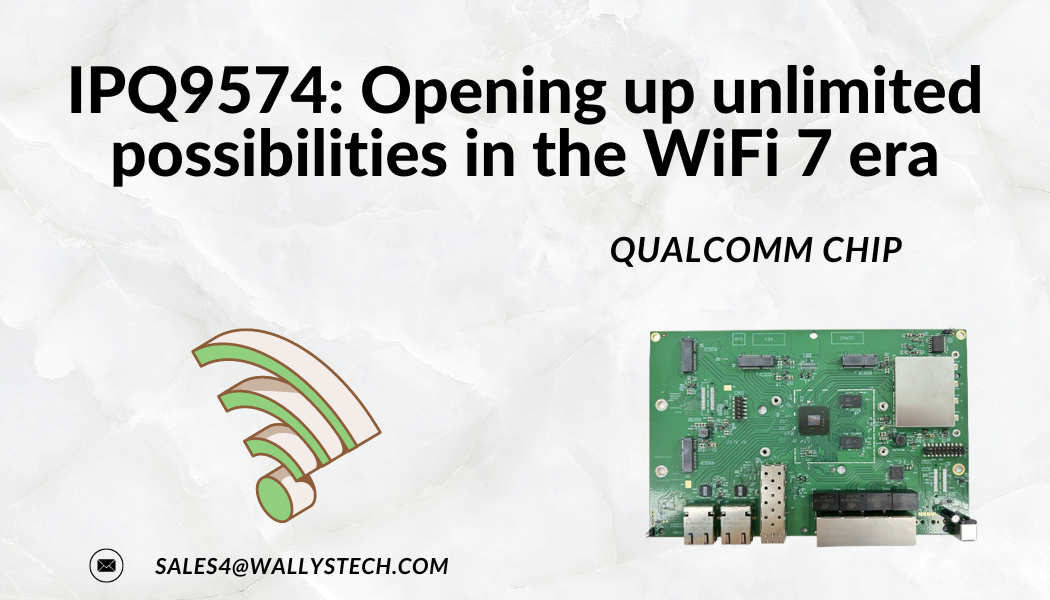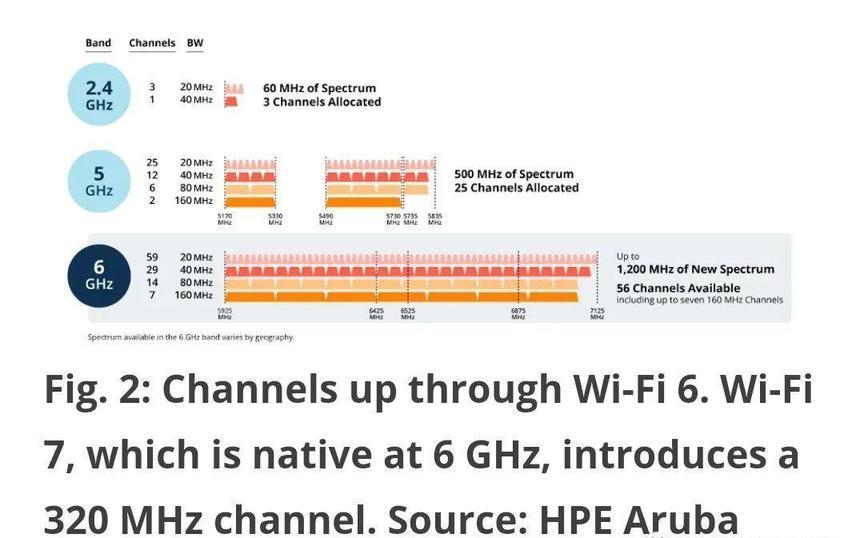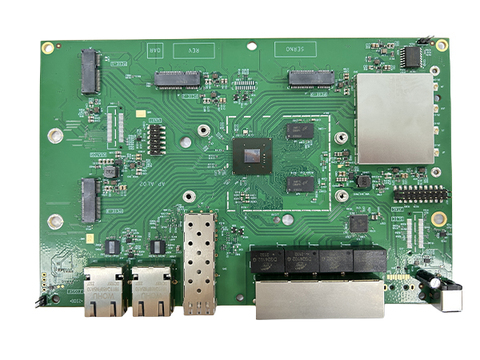WiFi7, a new communication technology revolution?

The latest generation of Wi-Fi protocols brings better speeds and data-handling capabilities, but it does little to bridge various communication technologies. This in turn makes designing chips more difficult and expensive because they must integrate and support multiple wireless technologies, including different versions of the same technology.
Wireless communications technology is often a victim of its own success, with each new generation promising to solve the congestion problems caused by the enthusiastic adoption of the previous generation's technology. In today's world, new use cases for wireless connectivity are emerging every day, from self-driving cars to hospital rounds robots to further reliance on the cloud, including Microsoft's interest in making Windows a cloud-based service for consumers. inevitable. The surge in demand has given rise to a series of communication protocols, each with its own niche, and there are even new protocols, such as Matter, that can interconnect old protocols.
Wi-Fi was once considered "the cousin of cellular technology," but is now the most commonly used wireless communications technology, with more than 3.8 billion devices shipped each year and nearly 20 billion in use, according to the Wi-Fi Alliance . The group coined the term and registered it as a trademark in 2000.
Technically speaking, Wi-Fi is the IEEE 802.11 protocol, which is a wireless local area network (WLAN) subset of the 802 protocol, covering local area networks (LAN), personal area networks (PAN), and metropolitan area networks (MAN). Web-based. The 802.11 protocol has received various suffixes as it has been revised over the years since it was first released in 1997. An entire generation has grown up without knowing what an Ethernet cable is.

The services and protocols specified in IEEE 802 map to the lowest layers (Layer 2, data link and Layer 1, physical) of the seven-layer Open Systems Interconnection (OSI) network reference model. IEEE 802 further divides Layer 2 into two sub-layers: Logical Link Control (LLC) and Media Access Control (MAC), which controls the hardware responsible for interacting with the transmission medium.
Traditional Wi-Fi is primarily an indoor technology with a range of about 150 feet, depending on frequency. Its coverage can be increased through wired signal extenders or wireless repeaters, but at higher frequencies there is still a risk of the signal being blocked by walls or other solid objects due to attenuation and absorption. Outdoors, if the path is clear, the signal range may be 300 feet or more. Low-power HaLow Wi-Fi (802.11ah) operates at lower frequencies and has a transmission range of up to one kilometer.
"At lower frequencies, everything looks like glass to radio waves," said Marc Swinnen, director of product marketing at Ansys. "But as you get higher and higher, things become more and more opaque, even to small Obstacles can also block the signal. Also, longer wavelengths go around corners more easily than longer wavelengths. So at higher wavelengths, you need more line of sight. With 6G cellular and Wi-Fi 7, you will have to Install more localized base stations.”
Wi-Fi underpins most IoT applications, whether consumer or enterprise, and that's where the problem lies. If every home appliance requires spectrum, from smart light bulbs to the electric cars pulling into the garage, and every office device requires spectrum, from wireless printers to 4D displays in conference rooms, then interference and network slowdowns seem inevitable.
“There is huge consumer demand for improved Wi-Fi performance,” said Gabriel Desjardins, director of product marketing for Broadcom’s Wireless Communications and Connectivity Group. “We receive endless requests from our customers. This is not something consumers understand in itself, but considering By the time a lot of carriers are going to roll out 10 Gb fiber or 10 Gb cable in the next few years, consumers are going to be asked to pay X dollars a month to get the upgraded fiber, and they're going to need wireless to match."
In addition, Andy Davidson, senior director of technology planning at Qualcomm, said that extended reality (ER) is jumping from entertainment uses such as immersive games to enterprise uses such as sales demonstrations and virtual hands-on training. They all require latency standards that exceed the limitations of Bluetooth-connected headphones.
Spectrum allocation
At the heart of the challenge is spectrum allocation. The electromagnetic spectrum is a narrow and crowded area that has been divided into licensed and unlicensed bands for more than a century. If the electromagnetic spectrum is raw land, then designated frequency bands are the boundaries assigned to the land.
The FCC divides spectrum into licensed and unlicensed bands, which is one of the main differences between Wi-Fi and cellular networks. Licensed spectrum is the domain of cellular companies, where the spectrum is legally protected from misappropriation. The unlicensed spectrum used by Wi-Fi networks is an open highway. The good news is there are no tolls. But there are also no traffic police, and the limited lanes can become congested. That said, being unlicensed doesn’t mean being unregulated. Operators need to know the specific usage rules for their area.
Initially, Wi-Fi was only allowed to operate at 2.4 GHz (3 channels) and 5GHz (24 channels). A "channel" in this sense is a further divided portion of frequency, similar to television and radio channels, rather than a channel in the Shannon information theory sense. As the number of devices increases, so does competition for these channels, especially since many older devices are set to specific channels at the factory. Even today, customers may experience lag from competing devices if they can't switch channels.
In April 2020, the FCC made a welcome decision to allow use of the 6 GHz band, making 1,200 MHz of spectrum available in the United States (59 channels) and much of the rest of the world, as well as nearly 500 MHz of clean spectrum in the EU . It is worth noting that the channels within this spectrum can be divided into narrower and wider parts, so the 59 channels could be, for example, 59 channels at 20 MHz or 7 channels at 160 MHz.

Wi-Fi 6、Wi-Fi 6E
The terminology here can be confusing. There was already a standard called Wi-Fi 6 (IEEE 802.11ax), which only dealt with power consumption, not spectrum. Launched in 2014 and officially released in 2021, Wi-Fi 6 introduced innovations (described below) that also laid the foundation for the newly launched standard Wi-Fi 7 (802.11be). When the spectrum opened up, the consumer-facing name was renamed "Wi-Fi 6E" to represent the expansion. Wi-Fi 6E has all the same features as Wi-Fi 6 while also being able to operate in the 6 GHz band.
Essentially, Wi-Fi 6 reduces latency through two different technologies, both of which help alleviate network congestion.
Orthogonal frequency division multiple access (OFDMA) is a multi-user version of orthogonal frequency division multiplexing (OFDM), which is an advancement of classic frequency division multiplexing (FDM). These techniques allow the channel to be segmented into subcarriers, with each generation of segmentation becoming more fine-grained and flexible.
"Orthogonal frequency-division multiplexing sends signals over multiple different carriers," Qualcomm's Davidson said. "If there's a problem with any of these specific carriers, you're backed up by the other carriers, which means a higher quality signal can be fed into the device. OFDMA sends some carriers to one device and some to Another device. Essentially, you can communicate with multiple devices at the same time by dividing the available bandwidth.
Multi-user, multiple-input, multiple-output (MU-MIMO) controls the number of data streams from the antenna. Before the introduction of Wi-Fi 5 (802.11ac), while routers could communicate with multiple devices, they could only communicate with one device at a time. In WiFi 5 MU-MIMO, this number increases to four, and in Wi-Fi 6, this number doubles to eight.
Combined with the Wi-Fi 7 version of OFDMA, which can better control different traffic flows to different devices, MU-MIMO will significantly reduce congestion. Also helpful is the addition of quadrature amplitude modulation (QAM), which controls the amplitude and phase of the signal. Davidson said Wi-Fi 7's top data rate should be increased by 20% at 4k QAM.
Wi-Fi 7
Unlike Wi-Fi 6E, which only offers additional spectrum, Wi-Fi 7 includes 6 GHz access as part of its basic design. For example, for the first time, sub-channels can be further combined to provide ultra-wide 320 MHz channels, providing even higher bandwidth.
"Wi-Fi 7 becomes the first standard that can take advantage of additional spectrum," Davidson said. "If you want to provide more capacity to users, you tend to break it up into a large number of devices with narrower bandwidth and reuse them throughout the building. For enterprise applications, they are usually still at 40 MHz and 5 GHz because They can have more access points (APs). When they have more APs, they give more people access to a faster backend. So you can split it to provide more users with faster Multi-capacity. However, in these enterprises, you also want to get the benefit of higher speeds. For example, with the benefit of 6 GHz, you can increase the base level to 80 MHz channels. So you can provide IoT devices in 2.4 20 MHz channels, 40 MHz channels in 5 for high-speed devices
From an end-user IT department's perspective, Wi-Fi 7 provides a new level of distribution control. But in some ways, from a design engineering perspective, it's just a further refinement of the previous generation.
But there is one important, novel addition that is key to Wi-Fi 7’s value — the incorporation of multi-link operation (MLO).
"Although there are multiple different radios on the access point, the client always connects to one of the bands and must choose which band to connect to. The big change in Wi-Fi 7 is that clients can now connect to APs on multiple bands at the same time ." Davidson said. "It can use them one at a time or in combination depending on the capabilities of the device."
Desjardins also emphasized the importance of MLOs. “Wi-Fi 7 switches between different bands so quickly, it essentially switches at the packet level. At the MAC layer of Layer 2, Wi-Fi 7 works differently than previous technologies. It’s never done anything like that. There is no mechanism to quickly switch between multiple channels. There has never been a way to bypass interference or bypass congestion like there is now. This is a modification and improvement of the MAC, internal timing of the chip."
WIFI 7 Product DR9574---IPQ9574 chip

Qualcomm IPQ9574 Quad-Core ARM-A73 @ 2.2GHz processor ‘Alder’ Series
Email:sales4@wallystech.com








评论